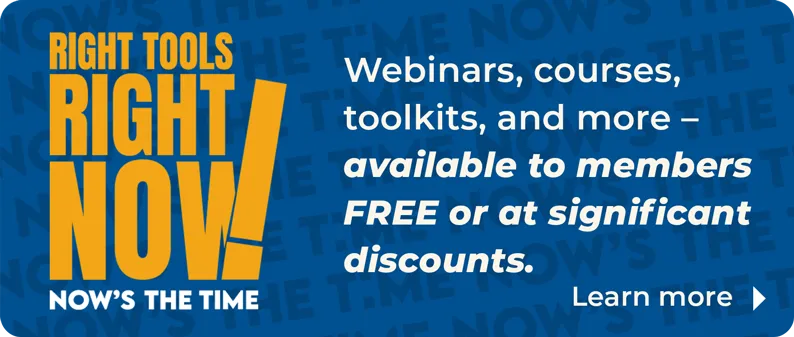For large associations, weathering an economic downturn is about creative budgeting or layoffs; for small associations it’s about keeping the family together. I know my members personally and I can see how the slow market in my area is affecting them.
Although we haven’t seen a huge drop in membership, we do anticipate losing roughly 20 percent of our MLS membership during our next billing -cycle. Like other small REALTOR® associations, finding a place in our budget to compensate for that loss is a challenge—we simply don’t have a lot to cut, nor do we have many non-dues-revenue opportunities on which to rely. I don’t have staff to lay off or events to scale back, so I try to bargain shop for the association like I do for my household—that means cutting coupons and scouting out deals for everything from paper supplies to furniture.
Besides raising dues, how can small associations—in areas where the market has softened—pay the bills and help their members stay afloat? Several small-association AEs had creative answers that should give us some hope of making things work in these tough times.
“Without a doubt our major cuts will be in travel expense,” says Rose Wanosik, EO with the 165-member Tuscarawas County Board of REALTORS®, Ohio. For their 2009 budget, many associations are considering what their membership would deem a necessary versus a dispensable expense.
“The best thing we did was to look at every contract and try to negotiate them down,” said Tracie Gorham, AE with the 105-member Shiawassee -Association of REALTORS®, Mich. “This included copier contracts, printing contracts, even phone and Internet contracts.” As the market and economy slow in may areas, service providers will become more likely to bargain with you on your contracts. Take this time to save your association some green for 2009.
Bob Wynne, EO with the 187-member Amador County Association of REALTORS®, Calif., offers some good advice for small associations: “If you need more money, do your best to find it in some place other than your members’ pockets. Don’t hire out or pay for anything that can be done in-house.” From newsletters to accounting, try to handle your day-to-day services yourself if possible, he suggests.
One small-association AE in Ohio has seen an increase in REALTORS® taking up second jobs, which makes it difficult for them to take CE classes, cutting into his non-dues revenue. “Many of our members are picking up part-time or full-time jobs to supplement their income, so we are going to offer some evening classes next year to help those who can’t come to the board for day classes.” The association has also started to offer online classes, which provide additional educational opportunities to members and creates a small amount of non-dues revenue.
One CEO in Georgia told me he’s preparing two budgets, one estimating membership levels to be down 20 percent and one down 40 percent. He also plans to decrease his own salary, allowing a
small raise for his assistant. When I asked if he voluntarily cut his salary or if it was policy, he said, “I did it to show that I am here as a leader and organization builder.”
My association is moving into 2009 with enough reserves to help us through any further downturn in our local market. I’ve found that having strong reserves is the most important stabilizing tool for an association in a down market. We’re hoping to cut our 2009 dues to help our members’ pocketbooks.
Although experts are predicting that the market is getting better nationwide, we still need to watch out for number one: the members.
Amy DuBose, e-pro, is the association executive with the San Marcos Area Board of REALTORS®, Texas. She can be reached at 512/396-5478 or amy@smabor.com.








